
Bf-110G-2

The
Bf 110 series is well
documented so I'm not going to go into a protracted history here but
instead will concentrate on the specific variant and how it may have
differed from earlier variants. While history tends to paint the Bf
110
as a failure based on its performance in the Battle of Britain, it
really wasn't the aircraft that was a failure but the concept of a
heavy fighter that failed and it wasn't just Germany that found this
out as the concept of a heavy fighter was popular among a number of
countries during the late 30's. The Bf 110 was found to be useful in
many roles and was in production and service for most of the war.
The
design
of the "G" series of the Bf 110 had begun in the summer of 1941
with the G-0 differing from the Bf 110F primarily in having DB-605B-1
engines which were of similar dimension but afforded 1,475 h.p. for
take off and emergency. The proposed initial production model the G-1
was rejected in favor of the G-2 which could be used either as a
Zerstorer or a heavy fighter-bomber and began leaving assembly lines
in
May 1942. The G-2 adopted the revised tail surfaces introduced on the
F-4 variant, a modified strengthened undercarriage and steel engine
bearers. Rear defense was improved by the installation of of an MG 81Z
twin 7.9mm machine gun. The G-2 could be fitted with a variety of
Rustsatz or field conversion sets. These included a 37mm under
fuselage
cannon, nitrous oxide injection for the engines and upgrading the nose
armament from four machine guns to two 30mm cannon and various
combinations of those.
The
Kit
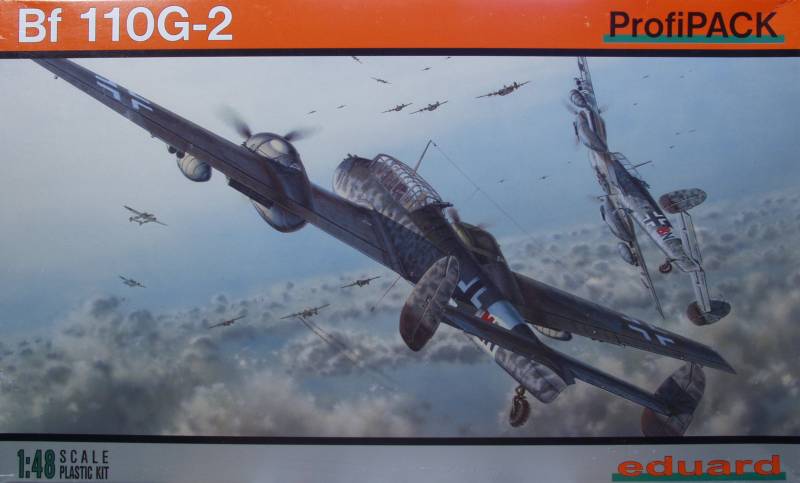
Back
around 2007 Eduard began releasing a series of Bf 110s in 1/48 scale.
It was apparent from the beginning that they intended to release a
number of variants due to the number of unused parts on the sprues. As
time passed nearly every variant from the 100C on has been released.
The kits were well received and very well molded and detailed as one
can see by looking at the number of parts supplied. Early builders
however found that while the kits in general fit together well there
were some areas that didn't and mostly due to the design which allowed
the builder to leave various things like the nose section that covers
the machine guns there open. All well and good for those wanting them
open but closing them lead to poor fit and a lot of complaining on many
of the forums. By the time the G variants some of the fit issues had
supposedly been addressed but there is some debate about that and the
kits will still challenge your skills a bit to build but you will end
up with a very accurate and well detailed kit.
The
Eduard kit comes in a moderately sized top open tray top box and it is
quite packed with sprues. The kit is molded in Eduard's signature olive
tan color and the sprues are divided between two large resealable
plastic bags. The clear sprues, masks and photo etch frets are
individually bagged. The parts are all very crisply molded and feature
recessed panel lines, rivets and fasteners. The surface has a semi
matte finish. A small amount of flash can be found on some parts. Mold
alignment is good and mold separation lines are relatively light.
Fabric surfaces are done with raised tape lines and no sag between
supports. The rivets are so fine that many are likely to disappear if
you get heavy handed with the paint. Looking over the air frame parts I
did not see any obvious surface defects. Most of the ejector pin marks
seem to be in out of sight areas but there may be a few you need to
deal with.
From a detail standpoint this kit is dressed to the
nines. The cockpit will no doubt take up a good portion of the build
time with all the plastic parts and PE. The upper nose has a very
detailed gun section but won't be seen except for the ends of the gun
barrels if you close it up. The gear bays are moderately well detailed,
the wheels are in halves and not weighted. The wheels are the same ones
Eduard supplied for the C, D, and E variants are a bit too narrow and
are treaded. The G series used larger tires and typically were not
treaded and thus my reason for going with some corrected after market
wheels. The control surfaces with the exception of the ailerons are all
molded in the neutral position. The kit does not come with engines or
the ability to open those areas. The canopy is a multi part affair
comprised of nine parts and can be assembled open or closed. Before
assembling the wing halves on needs to open holes in the bottom wing
depending on the markings you chose. A variety of under wing weapons
are supplied, bombs in two sized, rocket tubes, and two different gun
packs. The parts map shows a lot of parts not used, probably close to
100 but many of them are for the earlier models C, D, E and F.
Lets look at the parts...
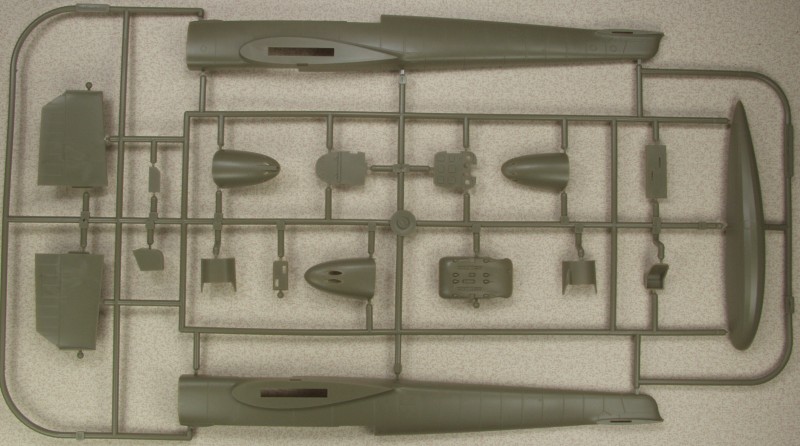
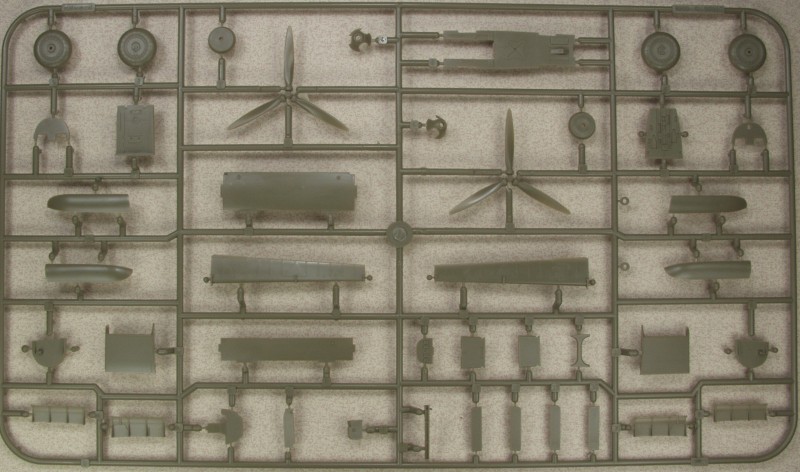
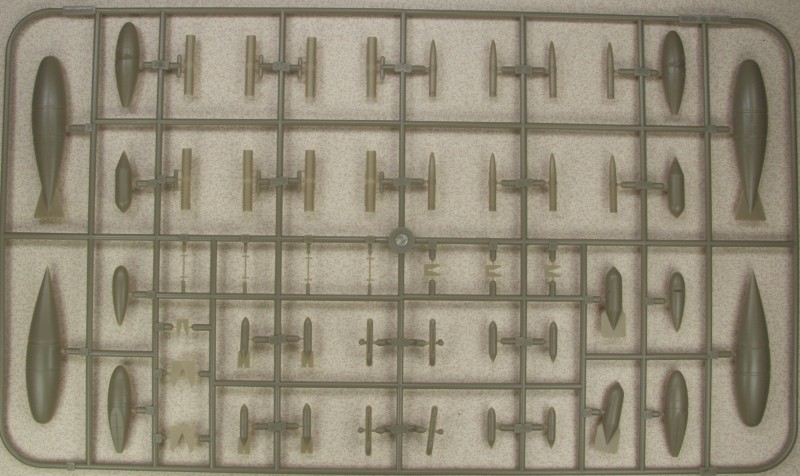
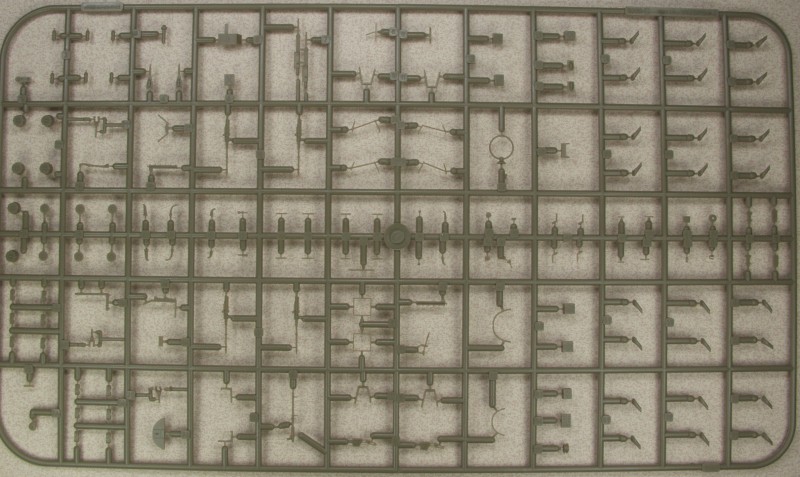
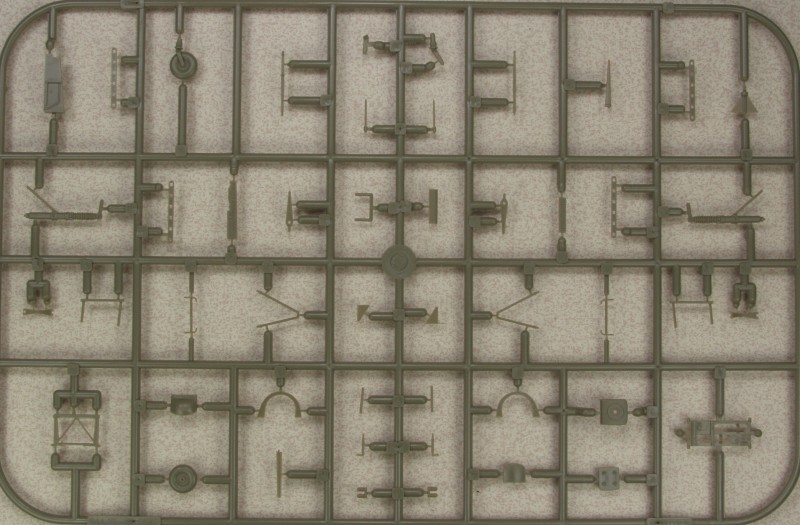
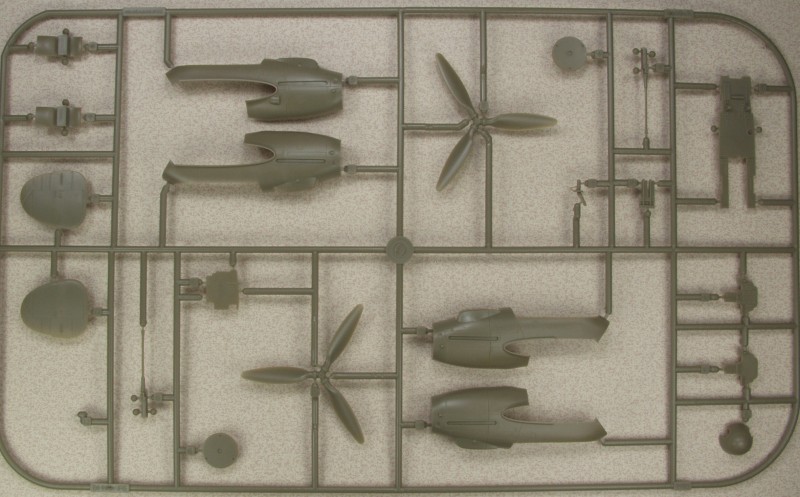
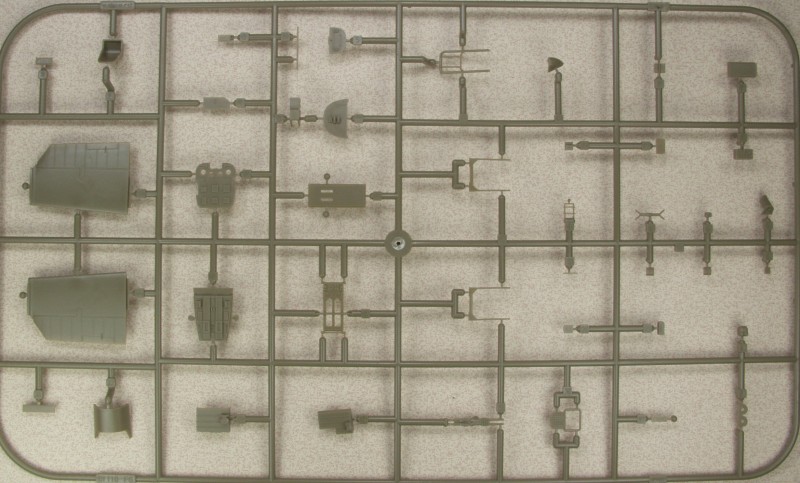
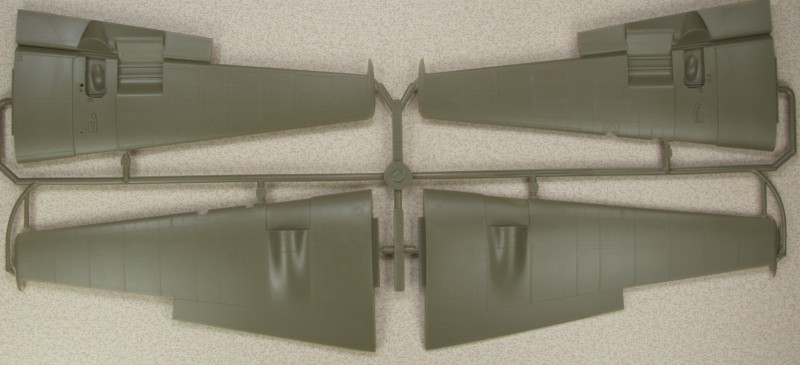
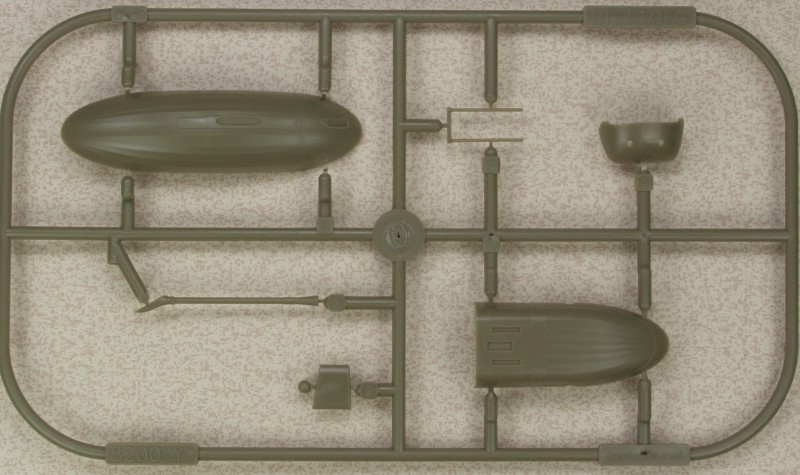
The kits comes with two frets of PE, one in color the not.
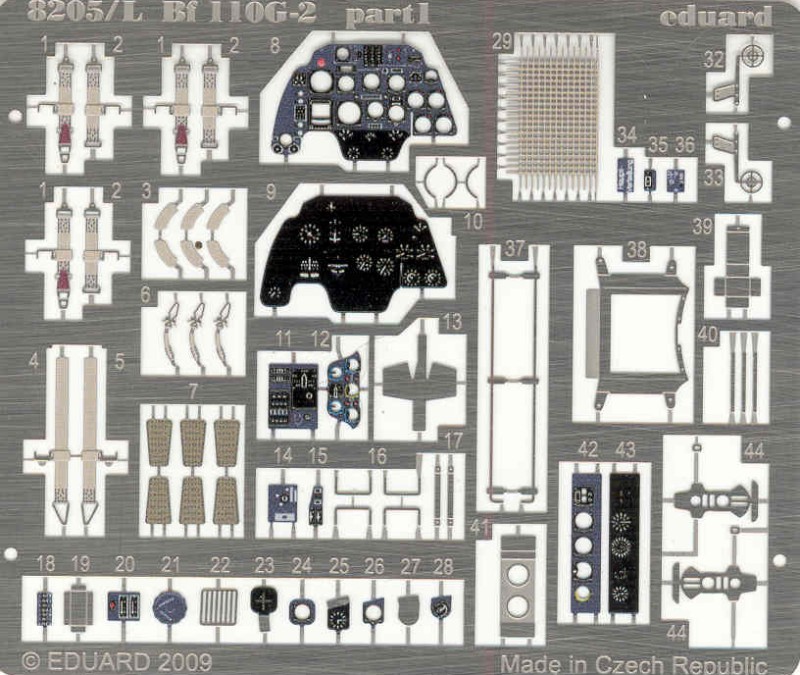

The
clear parts are nice and clear and thin with raised frame
lines.
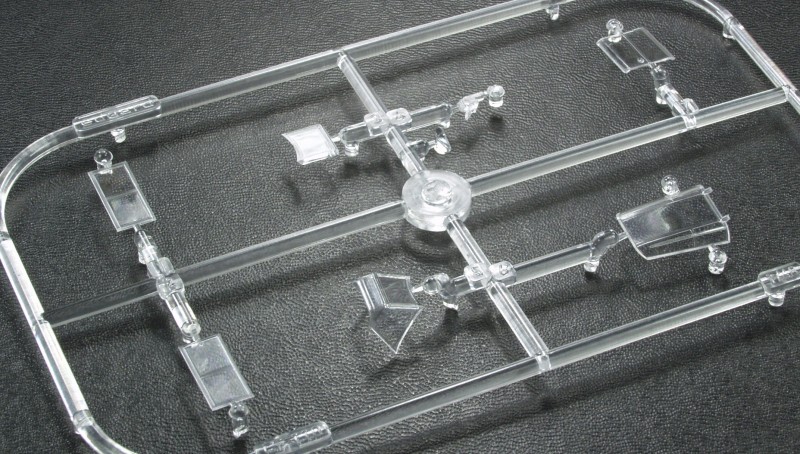
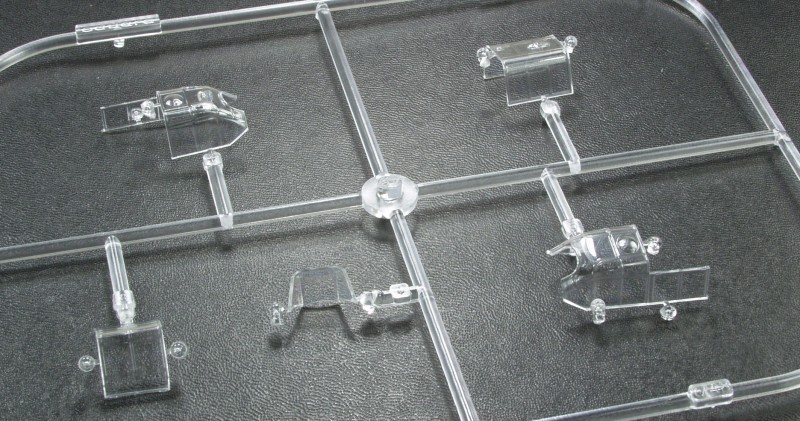
The
decals
are printed by Cartograph, one of the best in the business and
these look to be up to their usual standards. The sheet has
markings
for five aircraft, 5./ZG 1, Austria, winter, 1943 - 44, 5./ ZG1,
Italy,
summer, 1943, 10./ZG 76, Czechoslovakia, spring, 1944 and 5./NJG
200,
Russia, 1943. They
do supply Swastikas both complete and in
segmented form, it appears the complete one are set up to be cut
off
for regions where they are not permitted.
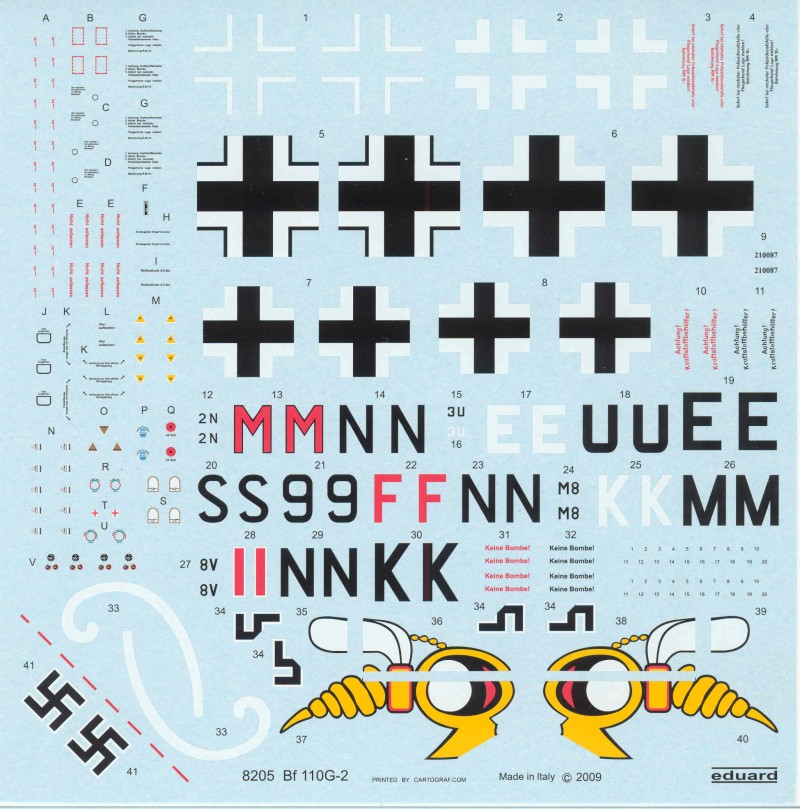
The
instructions
are in the form of a large 16 page booklet on
glossy paper
and stapled at the spine. It is printed in color
although most is
reserved for the profiles of the aircraft supplied
on the decal sheet.
One page contains all the usual required these
days, icon chart, safety
warnings, parts map that with all the parts not
used is most important,
and a paint chart calling out Gunze numbers. Nine
pages are used for
assembly drawings which seem quite complete but
the steps themselves
are not numbered. Four and a third pages are the
color profiles with
paint and marking information and one page has all
the stencil markings
on it. All in all a most impressed set of
instructions.
After
Market Goodies
There
really is not much need for after market in one of these
ProfiPack kits
but none the less there are plenty available. A check at your
favorite
online store will no doubt reveal more. I
did opt for a set of resin wheels from Aires (4157) that are
weighted
(but not so much as to look flat) shown below. The kit wheels
come from
their earlier series kits and are too narrow for the G
variants. They
are quite nicely molded with a bit deeper detail than the kit
supplied
wheels and come with masks.
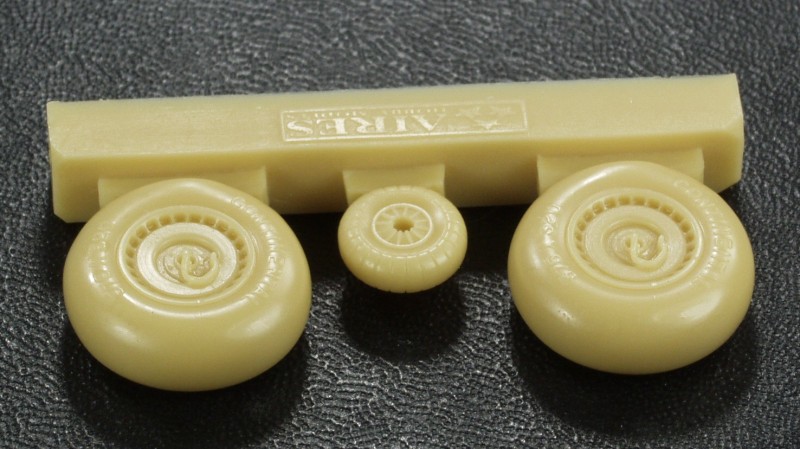
Conclusions
This
is an extremely well detailed and molded kit that should
produce a
beautiful end result. Due to the complexity and known fit
issues I
would recommend it for experienced modelers only.
Links
to kit build or reviews
A build can be found here
and an in box review here.
References
Warplanes of the Third Reich by William
Green
Back to the Bf 110 Series Page
Updated 3/3/17

















